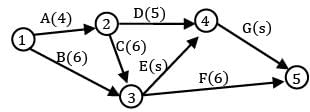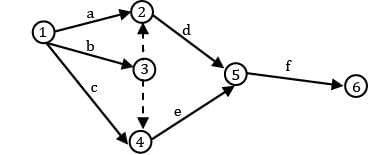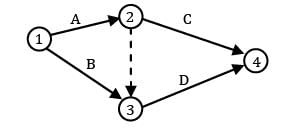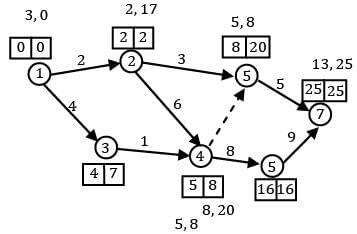The optimistic, most likely, and pessimistic estimates of time for an activity are 4 days, 11 days, and 12 days respectively. The expected completion time of this activity is.
Test: CPM & PERT Level - 2 - Mechanical Engineering MCQ
20 Questions MCQ Test - Test: CPM & PERT Level - 2
Which of the following are the guidelines for the construction of a network diagram?
1. Each activity is represented by only one arrow in the network.
2. Two activities can be identified by the same beginning and end events.
3. Dangling must be avoided in a network diagram.
4. Dummy activity consumes no time or resource.
Select the correct answer using the codes given below
Match List-I (Term) with List-II (Characteristics) and select the correct answer using the code given below the lists:
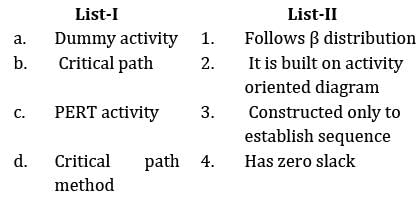
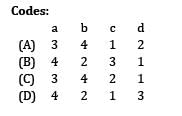


If the earliest starting time for an activity is 10 weeks, the latest finish time is 30 weeks and the duration time of the activity is 11 weeks, then the total float is equal to
The earliest occurrence time for event '1' is 8 weeks and the latest occurrence time for event' 1' is 26 weeks. The earliest occurrence time for event '2' is 32 weeks and the latest occurrence time for event '2' is 37 weeks.
If the activity time is 11 weeks, then the total float will be
Consider an activity having a duration time of Tij. E is the earliest occurrence time and L the latest occurrence time (see figure given).
Consider the following statements in this regard:

1. Total float = Lj − Ei − Tij
2. Free float = Ej − Ei − Tij
3. Slack of the tail event = Lj − Ei
Of these statements
In a small engineering project, for an activity, the optimistic time is 2 minutes, the most likely time is 5 minutes and the pessimistic time is 8 minutes. What is the expected time of the activity?
Consider the following project network
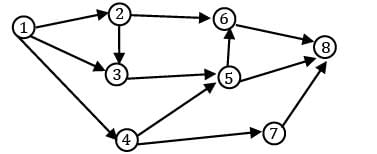
The number of merge events are
For the network shown in the given figure, the expected completion time of the project is

The total float associated with the activity shown below is

Consider the network. Activity times are given in number of days. The earliest expected occurrence time (TE) for event 50 is
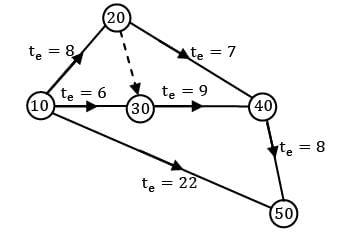
The variance (V1) for critical path a → b = 4 time units, b → c = 16 time units, c → d = 4 time units, d → e = 1 time unit. The standard deviation ‘d’ of the critical path a → e is
Consider an activity ‘A’ which is having the following values:
NC = Rs 100
NT = 3 days
CC = Rs 150
CT = 2 days
Find the cost of crashing activity A’ by single day
A project consist of following activities
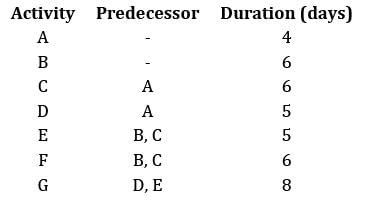
Minimum time required to complete the project in (days) is __________
For the given project, to draw a network diagram how many dummy activities are required?
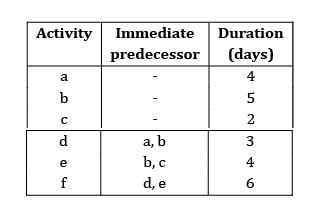
In the network shown below. The critical path is along

Consider the following project find the critical path duration.
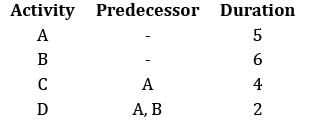
The expected project completion time is found to be 34 days. The standard deviation of the critical path is 5 days. Find the probability of completing the project in 39 days.
For the project network shown below calculate latest finish time of node 4.





